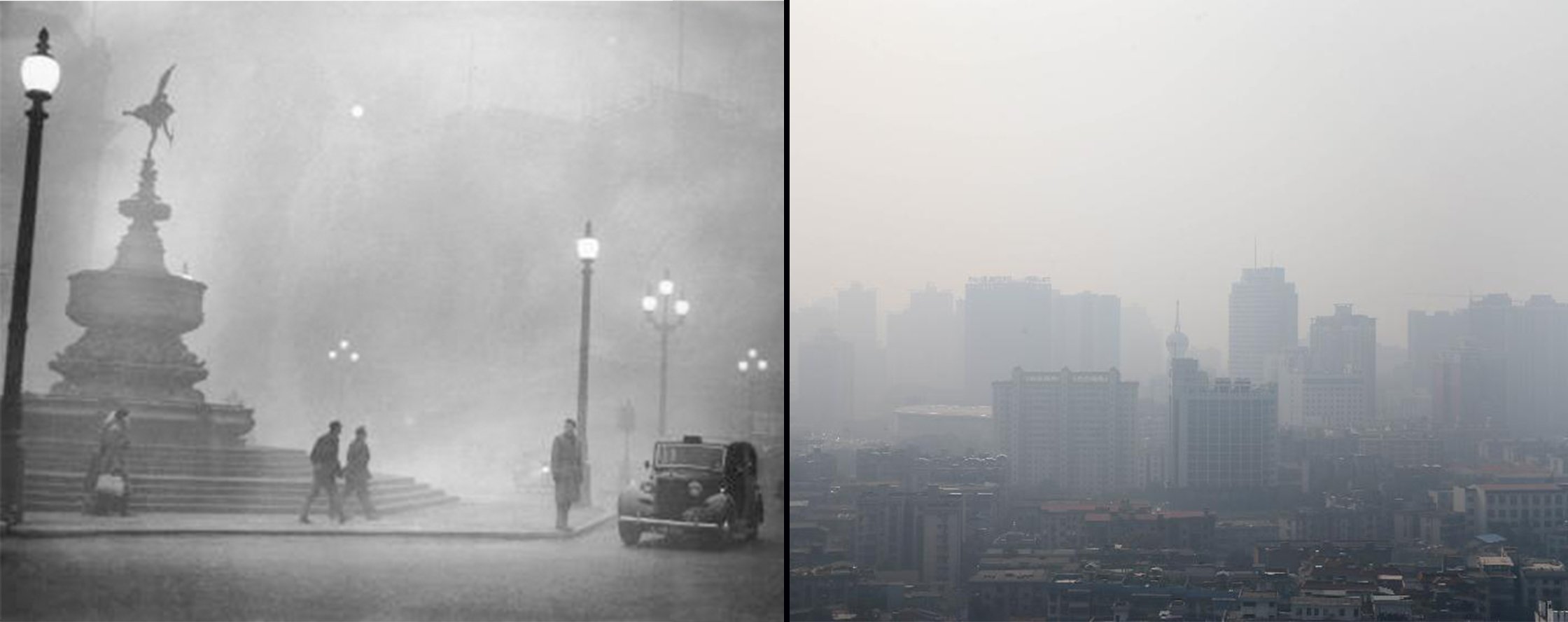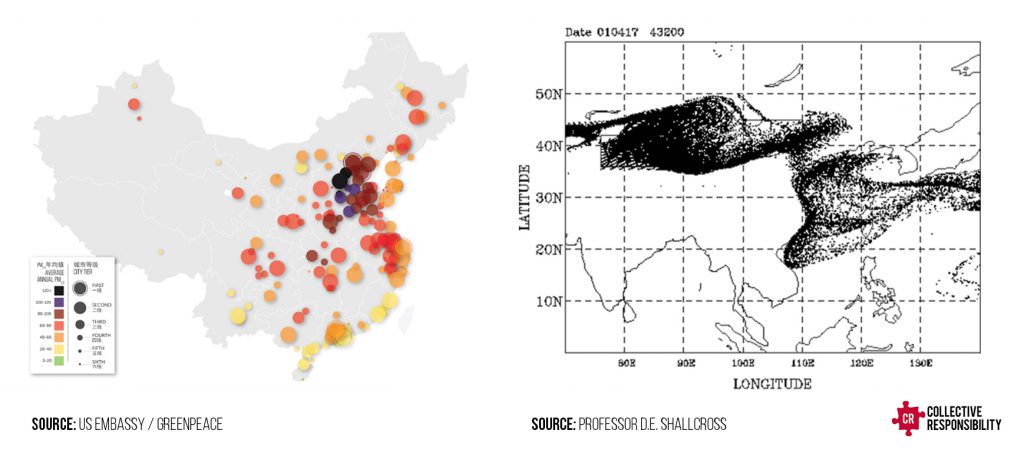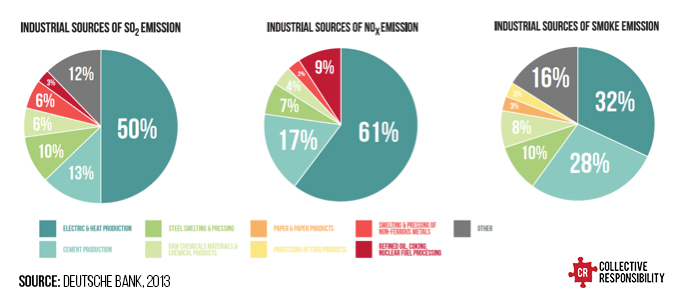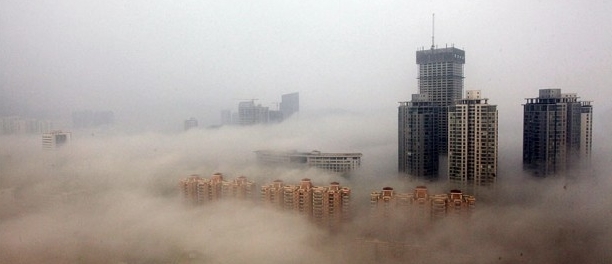“Beijing’s pollution is bad, but they’ll clean their air just like London did …”
In 1952, the five-day Great Smog of London killed more than 12,000 people and made over 150,000 people ill. It was an environmental disaster that many people today consider both a cautionary tale and an instructive example of how to address and overcome an air crisis for areas in similar situations – in part because it was an event that catalyzed drastic action.
However, we at Collective see this comparison between China and London (and other cities) as too simplistic, setting the wrong context for just how challenging the task and commitment of cleaning China’s air will be.

Here, there are no quick fixes. It will require a number of large adjustments to be made in energy and economy by stakeholders with varying motivations and connections to the issue.
While we have written about the sources of smog in China in the past and some opportunities to bring solutions to the market, we thought we would write a piece that busts the myth that the 1950s London Great Smog is comparable with China’s smog crisis today.
We need to have this conversation. With a better understanding of the China context – and what lessons China might learn from London to face its unique challenges – we hope to help catalyze business solutions for those challenges.
With that, here are three reasons why this is a myth that needs busting.
1. China is not a city. It’s a country.
As a starting point, it is important to understand that while the media has largely focused on the fact that smog is a challenge that is faced by Shanghai and Beijing, China’s wealthiest cities, this is a challenge that nearly all of China’s 150+ cities reporting their air quality face. This reality is visualized in the lefthand map below, using data from 2014.

But digging a little deeper, what is important to understand about this map is that all of these cities are growing at different paces, are supported by different industries, and have varied priorities for stakeholder concerns. For some cities that have yet to stabilize their middle-class populations or are actively seeking investments from firms being pushed out of the first-tier cities, solving the smog problem will remain a challenge.
Compounding this challenge is the longevity and spread of pollution via air currents, as shown in the righthand map above. One major cause of the Great Smog of London was the complete lack of wind that trapped smog in the city. However, China’s challenge is that wind will continue transporting pollutants from the developing (and heavily emitting) central and western regions of the country all over the country.
Unlike London, New York, or Los Angeles where conclusive actions were supported by fresh winds sweeping existing smog away, Beijing and Shanghai on China’s coast won’t have the same luxury. They will have to wait and depend on the rest of China’s still developing cities to clean up before they see any real progress.
2. Sources of smog are entirely different.
As shown below, the majority of China’s air pollutants stems from specific heavy industries. These industries are essential to fast development and continued economic growth, especially for cities adapting to accommodate hundreds of millions of new residents in the near future.
Unlike London, China cannot simply move all its heavy industries out of its city centers. China has to shift its entire economic structure from heavy industry to light industry before gains can be found. Therefore, the current situation is likely to continue for several decades as China’s third- and fourth-tier cities develop.

Chemical composition also plays a significant role in assessing an air crisis. The Great Smog in London was caused mostly by cheap coal burning in residential homes for internal heating during the winter. The bad coal contained harmful chemicals which compounded the negative effects of the smog itself, and so by solving the root cause of the contaminated coal, London was able to fix its crisis quickly.
However, modern urban China doesn’t have this problem. Not only does coal burning no longer occur in major cities, but the type of coal used in industry is cleaner these days as well. The real consumer-side causes of the smog are car ownership, manufacturing, and increased energy requirements for powering growing cities.
3. Speed of action will be different.
With the worst of the Great Smog in London taking place over a period of five days, and government officials were able to respond to the catalyst of deaths and drive immediate and conclusive action. But in China, such a quick reaction won’t be possible – even though China faces an estimated 1.6 million deaths per year attributed to air pollution.
In 1950s London, the government was able to make decisions and start discussions with the right people required to bring the 1956 Clean Air Act into effect. In part, this was because the government only had to deal with a single fuel source and engage a manageable number of stakeholders. With a small pool of those responsible, leadership could support improvements to technology and implementation of measures, such as:
- Erecting higher chimney stacks,
- Switching from direct coal-burning to electric and gas heaters in homes,
- Removing major emitters from the city proper, and
- Cleaning up the pollution sources in energy production.
In China, the speed and scale of the problem and its complications are vastly different from those of 1950s London. As mentioned above, China’s airpocalypse is not a mere city-level problem, but rather a continent-level phenomenon with hundreds of cities facing different types and scales of issues.
And the system involves hundreds of thousands of actors – some of whom are politically entrenched, while others are simply willing to accept the air pollution as a necessity of development.

Solving this problem requires agreement between individuals and groups across the country. While the developed metropolises now prioritize clean skies, other cities and provinces continue to press ahead with development and growth, regardless of the tradeoff between economic development and air pollution.
So, how will China avoid a similar catastrophe while catalyzing a similar reaction among those in power?
THE BUSINESS OPPORTUNITY FOR REAL SOLUTIONS
Businesses must look past the rhetoric of how China’s going to solve the problem and actively determine which cities are suffering the most, instead of focusing on the richest giants like Shanghai, Beijing, and Guangzhou. The cities facing the biggest need in the coming years are not on the coasts, but farther inland (as shown in the maps earlier in this article).
Companies should start running pilot projects in China’s second- and third-tier cities to fix localized problems, then scale up solutions over time. But to do that, firms must understand the priorities of those in charge.
The leaders of these cities are being judged not only on their economic performance but also on environmental quality performance and improvement – solving the air crisis is very much a priority. For many smaller and still-developing cities west of China’s coast, some of London’s original solutions can still apply (e.g. coal fire heating and factory relocation).
This is a unique opportunity to identify and work with city mayors and other political leaders in search of solutions. Whether on the emissions-side or through city design, resource extraction, energy production facilities, and even bike-sharing programs, these are the cities that need preemptive solutions.
Check out the following explanation from our recent episode of #AskTheCollective: “Catalysts for Change and Solving China’s Air Pollution Crisis”:
While the circumstances of London’s and China’s airpocalypses share some similarities – a coal-sourced, industrialization-driven smog crisis that damages people’s health – there are significant differences in many of the direct causes, challenges, and necessary responsive actions to be taken.
It took a lethal epidemic to bring about real change for Britain.
But for China, now is the time to implement and enforce city-and country-level solutions before the country suffers its own Great Smog crisis.
To learn more about China’s smog crisis, check out our Air Pollution tag, as well as our Air Pollution Report and Energy Report. Follow Collective on social media to receive the latest updates on new articles, videos, and events.
